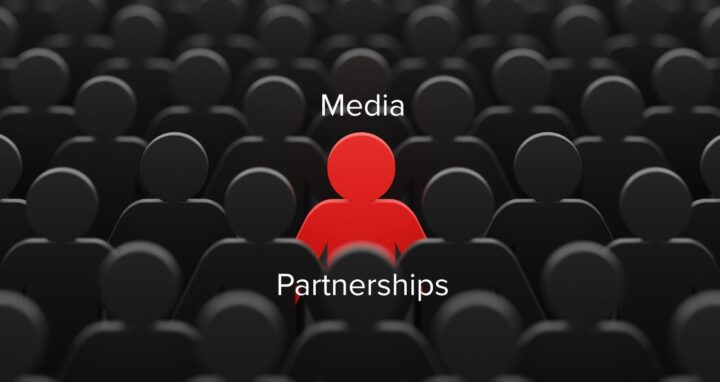A new global study has highlighted that the world’s biggest pharmaceutical companies continue underutilizing an opportunity to promote and protect their brands through effective use of localized content and digital media in all the countries they are active in.
The report has been compiled by the Worldcom Public Relations Group, the leading global partnership of independent public relations firms. The Digital Health Monitor, which Worldcom has produced since 2018, shows that leading pharmaceutical companies are not leveraging localized content and are not getting the most out of the digital channels.
The study revealed that digital content and communications priorities were highly influenced by where pharma companies were headquartered, with the majority focusing messaging on the cultural perspective of their home country. By not creating content with a global and localized perspective, pharmaceutical companies are missing an opportunity to educate and protect their brand in all the countries they are active in.
“Pharmaceutical companies are an integral part of the healthcare sector and are responsible for researching, developing, manufacturing and distributing life-saving drugs and medical treatments,” said Serge Beckers, Managing Partner of Wisse Kommunikatie. “In this important role, they have a tremendous opportunity to share news, inspire ideas and share information about diseases and disorders and their prevention more proactively. Leadership and education can be a tremendous and effective pathway to deeper customer relationships.”
In the latest Digital Health Monitor, Worldcom Healthcare analyzed the digital media activities and footprints of 25 pharmaceutical companies in 27 countries across 11 digital channels for the period between 2023-2024.
Top 5 Overall Rankings
Roche Pharmaceuticals climbed two places from its position in 2023 to top the rankings this year for digital communications. Pfizer also climbed three places from fifth in the previous year to runners up. AbbieVie replaced Sanofi in the top five.
With three of the companies from 2021 no longer in the Top 5, the Healthcare Monitor shows that leveraging digital communications, social media and targeted content can help to propel new organizations into stronger overall positions.
| 2024 | 2023 | 2021 |
| 1. Roche Pharmaceuticals | 1. Sanofi | 1. Abbott |
| 2. Pfizer | 2. Novartis | 2. Pfizer |
| 3. Novartis | 3. Roche Pharmaceuticals | 3. AbbVie |
| 4. Bayer (Pharmaceuticals Division) | 4. Bayer (Pharmaceuticals Division) | 4. AstraZeneca |
| 5. AbbVie | 5. Pfizer | 5. Novo Nordisk |
Analysis of key digital activities identified by the Digital Health Monitor
Website
All 25 pharmaceutical companies have a global website, they do not have websites covering each country of operation, thereby not satisfying the demand for local content. The pharma companies making the most use of country sites were Pfizer and Roche Pharmaceuticals with both having local websites for 24 out of the 27 countries they operate within.
Blogs
Pharma companies made more use of the power of blogs than they did in 2023. The ‘blog impact’ is still very modest, with an average use percentage of only 29%. While all but two pharmaceuticals report having a ‘global blog’, local blogs are hard to find, with an average of only 26% of country operations producing blogs.
Social media channels
X (Twitter) – There has been a large exodus from the platform X, formerly known as Twitter. Representation on, and sustained use of, has dropped from 12% to 9%. This is a dramatic change from the first report in 2018 when 32% of companies were present on the channel and using it.
Facebook – After a decline in 2023 to 9% usage, many companies have restarted their account activity. In 2024, there were 12% of accounts where sustained activity was evident.
LinkedIn – All 25 companies have global LinkedIn accounts. While Novartis and Roche Pharmaceuticals remained at the top of the list, there are now 5 other companies that have joined them in having a LinkedIn efficiency over 20%.
YouTube – Local YouTube accounts have only been set up in a handful of countries , and the same is true for other channels with visual focus, such as Instagram.
TikTok –After seeing no usage at all in 2023, only 1% of pharma companies have harnessed this channel this year. This arguably represents a missed opportunity to engage and build trust on this platform with a larger and more diverse demographic as the audience.
Worldcom Healthcare’s top five (of 10) recommendations to improve ROI from online communications.
- Be sensitive to societal developments such as: the increased importance of a realistic work-life balance, DEI, ESG, the need for healthcare cost reductions, etc. Communicating about these themes will increase your reputation as a trustworthy organization.
- Communicate about the benefits of your products, not about the products.
- Staff shortage is imminent. With a new generation of employees coming into the workplace, it is vital to get the right balance, both in terms of key messages and communication channels.
- In the slipstream of TikTok, big brands like Facebook, Instagram, and YouTube have pivoted to short-form video content to keep users engaged. Invest in people or agencies that can create this type of content
- Take both a global and local perspective when creating an effective content strategy, both language and content wise.
Download The 2024 Worldcom Digital Health Monitor Report and read all 10 recommendations from our experts.



